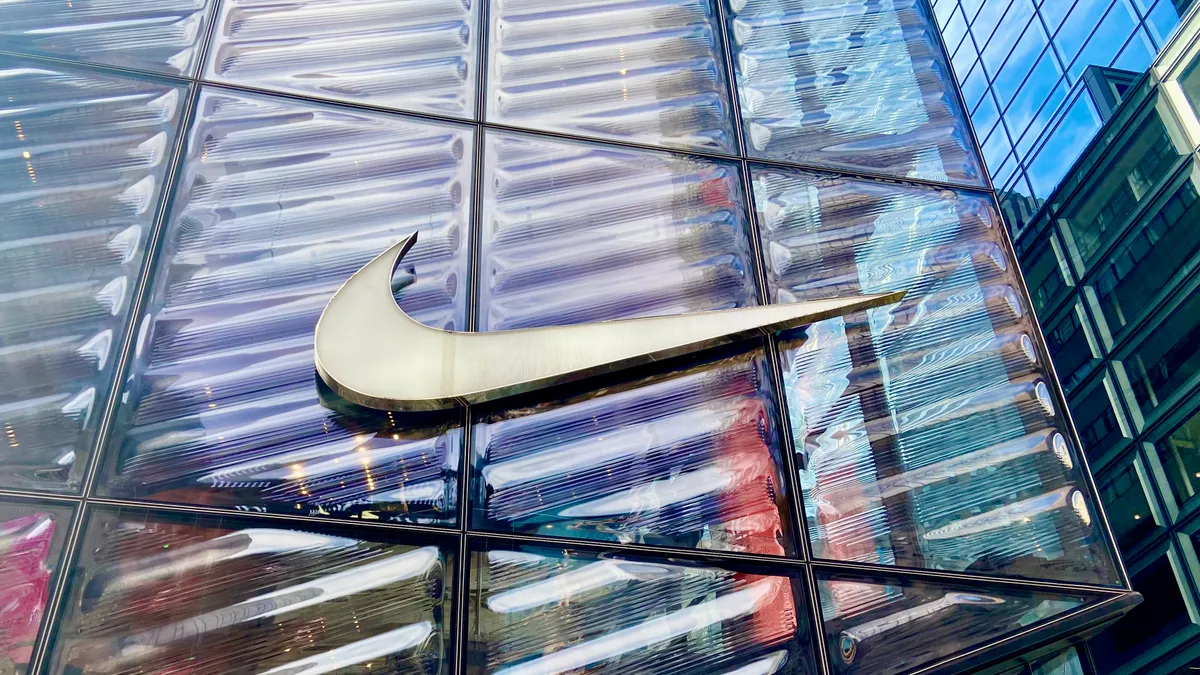Dive Brief:
- Tom Peddie will return to Nike as vice president of marketplace partners, the company confirmed Tuesday in a statement to Retail Dive. Peddie replaces Jim Reynolds, who is stepping down from that position and retiring from Nike after 18 years with the company.
- Peddie in 2020 announced his retirement as Nike’s vice president and general manager of North America after 30 years with the company. He is set to rejoin Nike as the company moves to adjust its direct-to-consumer and wholesale strategy to “a more balanced approach,” CEO John Donahoe said during a recent earnings call.
- Upon Peddie’s 2020 departure, Nike named Ann Hebert to replace him. Hebert resigned about a year later.
Dive Insight:
Peddie is rejoining Nike as the athletics giant faces criticism — and even litigation — over its direct-to-consumer strategy.
“Tom spent many years at Nike leading Global Sales before becoming the GM of Emerging Markets, and then heading up the North America geography,” the company said in a statement. “He is a seasoned leader with a proven business track record and experience building high-performing teams.” Nike did not immediately to Retail Dive’s requests for comment around Peddie’s start date.
The challenges around its strategy may put Nike in a vulnerable position as others in the footwear and apparel space, namely Adidas, stand to benefit, according to Wedbush analysts Tom Nikic and Matt Quigley.
“The Adidas brand is clearly starting to regain momentum, thanks largely to the trend towards their retro styles (Samba, Gazelle, etc.),” the analysts said in a Friday note. “Plus, given that Nike will be pulling back distribution of the styles that cater to the shoe-obsessed ‘sneakerhead’ community (a customer sub-segment they've struggled to address ex-Yeezy), they could potentially pick up wallet share among these consumers now that Nike's Jordan and Dunk styles are declining.”
Neil Saunders, managing director of GlobalData, echoed those sentiments.
While smaller brands like On and Hoka have become appealing to customers, they are unlikely to displace Nike as a leading player in the sector, Saunders said in emailed comments. However, he added, a concern “is that they are gaining market share at a time when Nike is losing it.”
Nike lowered its full-year guidance after ending its most recent quarter with a revenue decline. Within Nike’s DTC business, revenue fell 8% in the fourth quarter, but rose 1% for the year. However, Nike’s wholesale sector grew 5% in Q4 and was up 1% for the year.
In contrast, Adidas raised its full-year guidance in April, saying it expects currency-neutral revenues to increase at a mid- to high-single-digit rate in 2024. Previously the company expected a mid-single-digit rate increase.
Separately, Nike also recently made changes to its board of directors. Alan Graf Jr. resigned from the board last month, shrinking the board's size to 12 members, according to a filing with the U.S. Securities and Exchange Commission.















